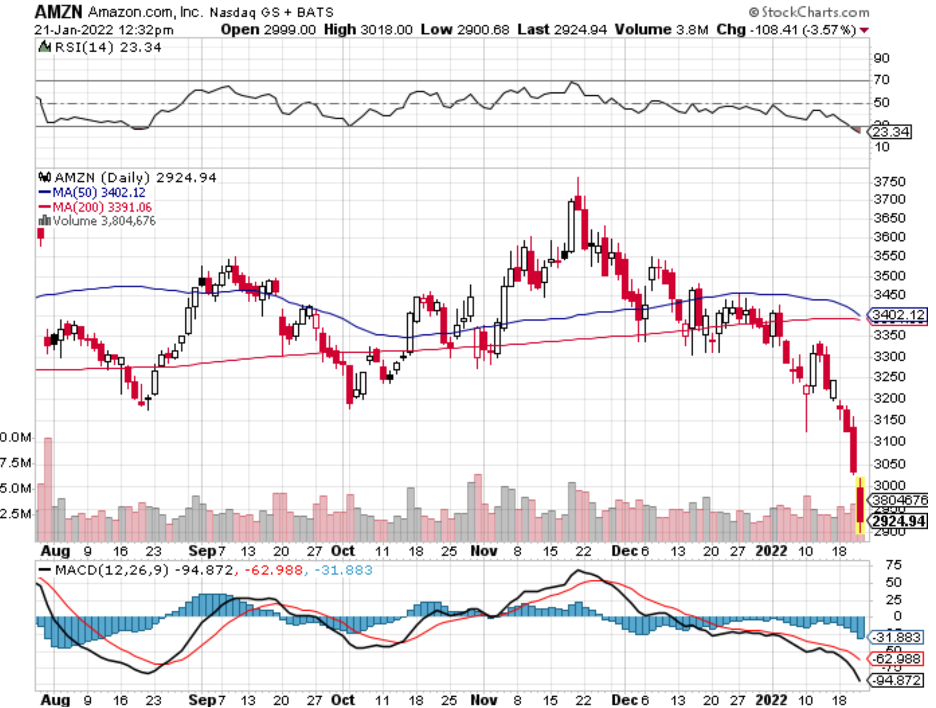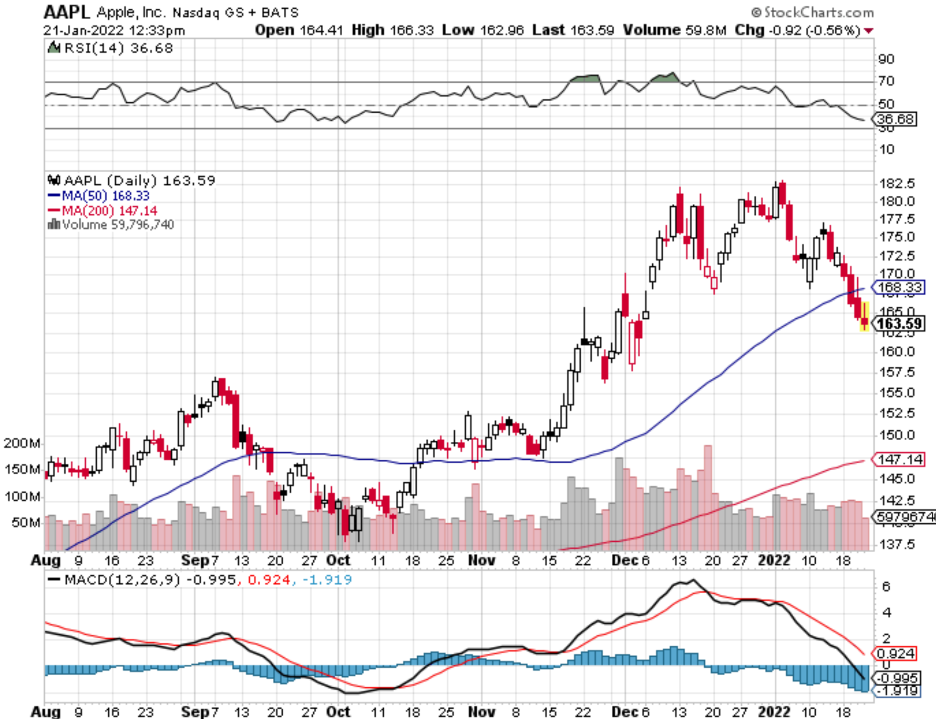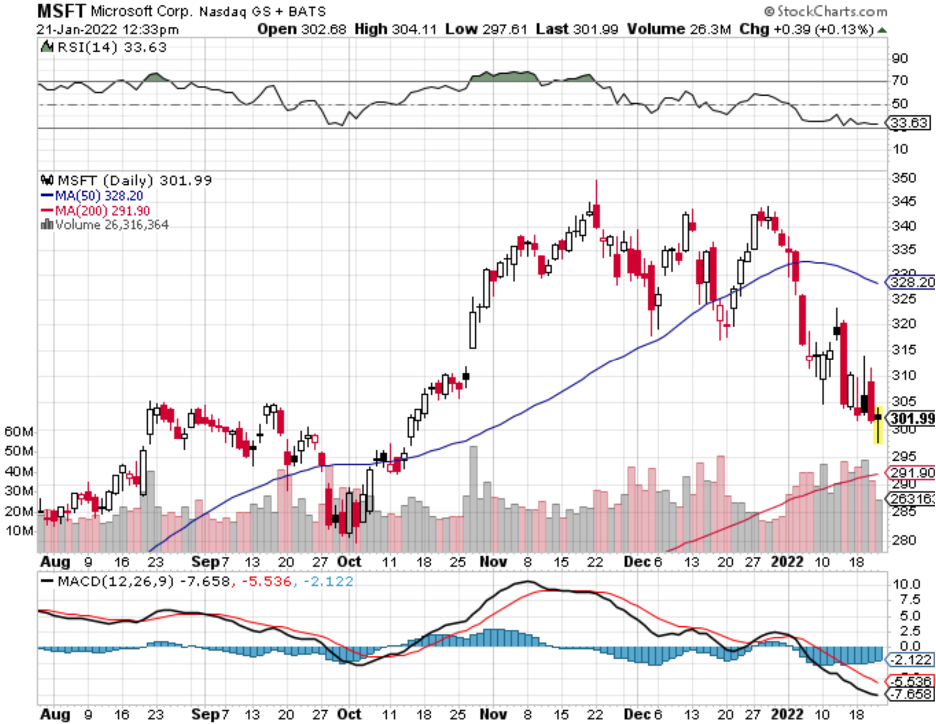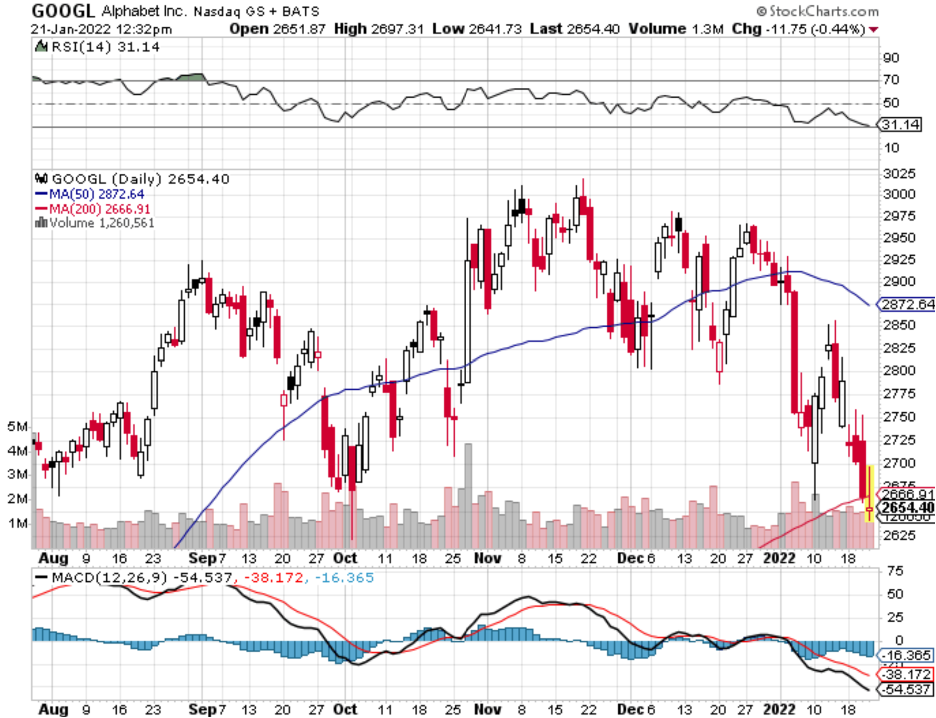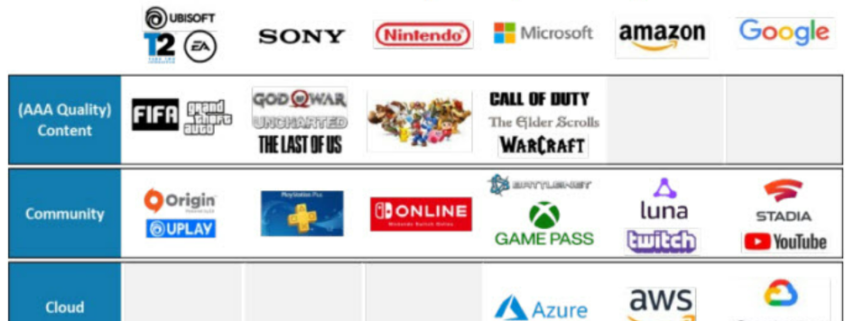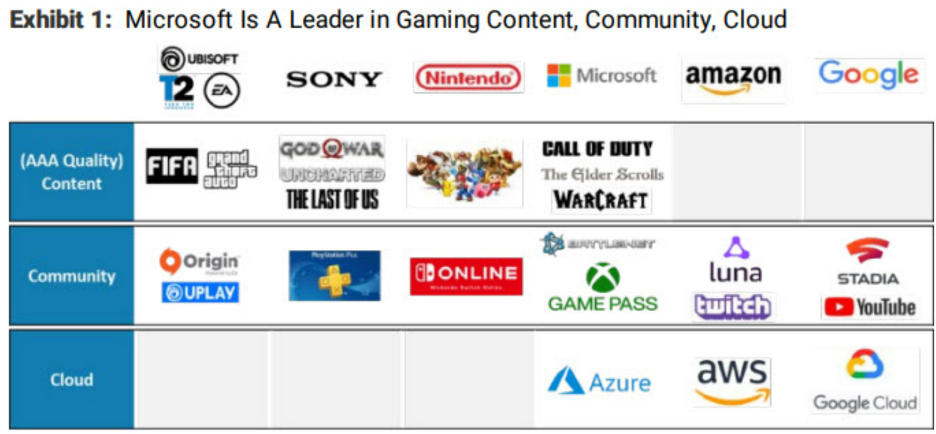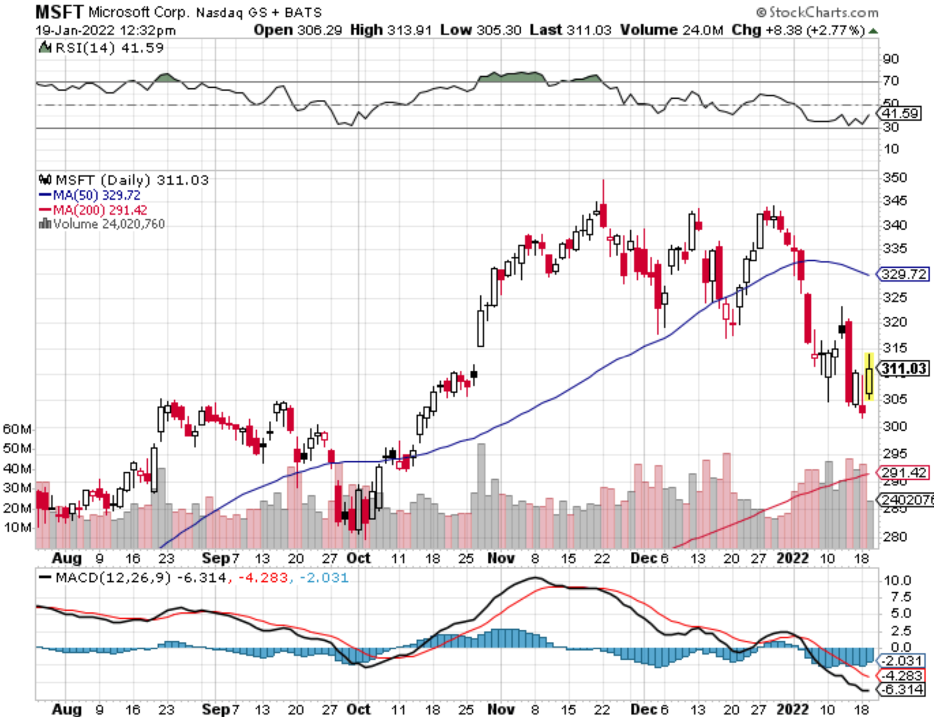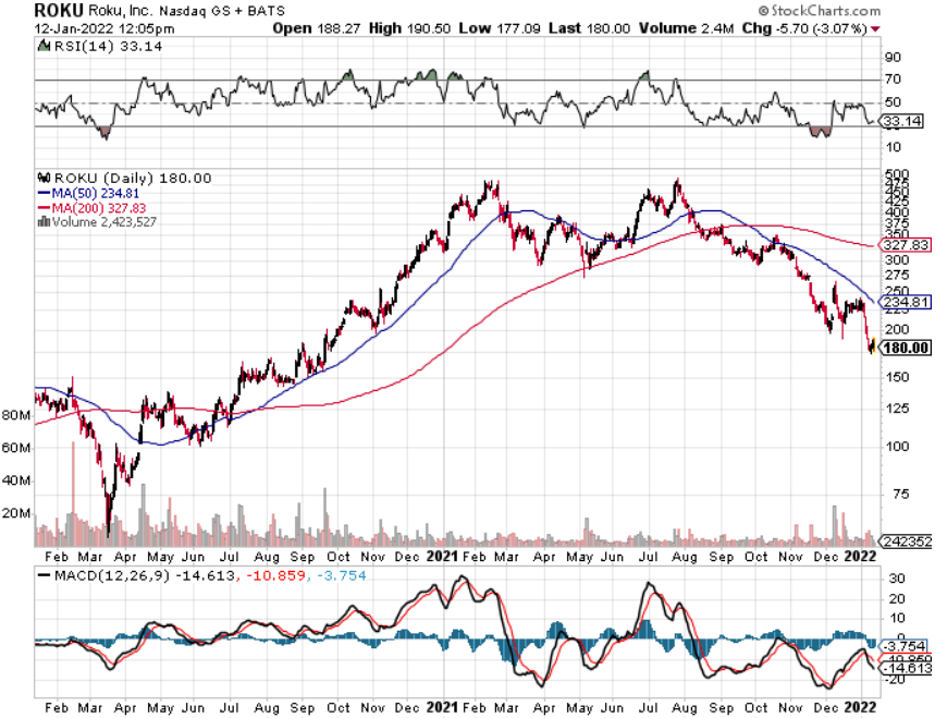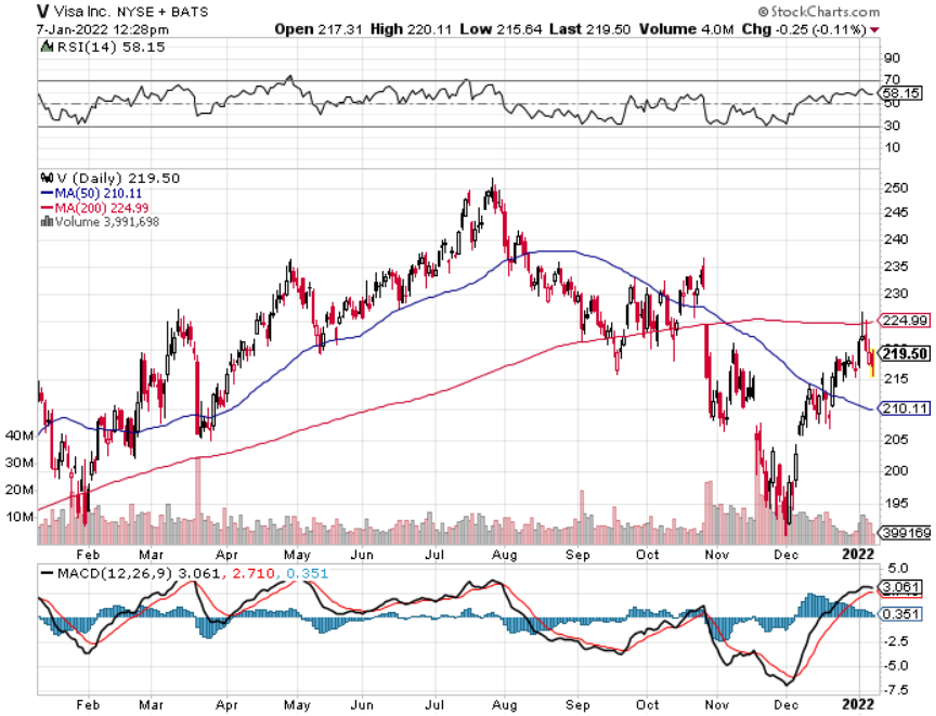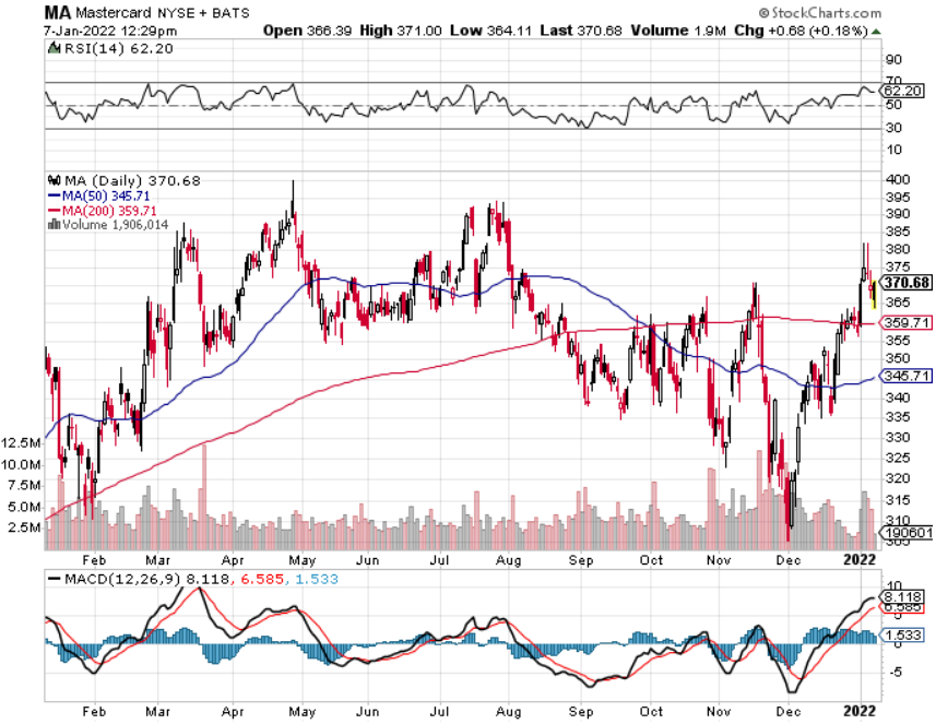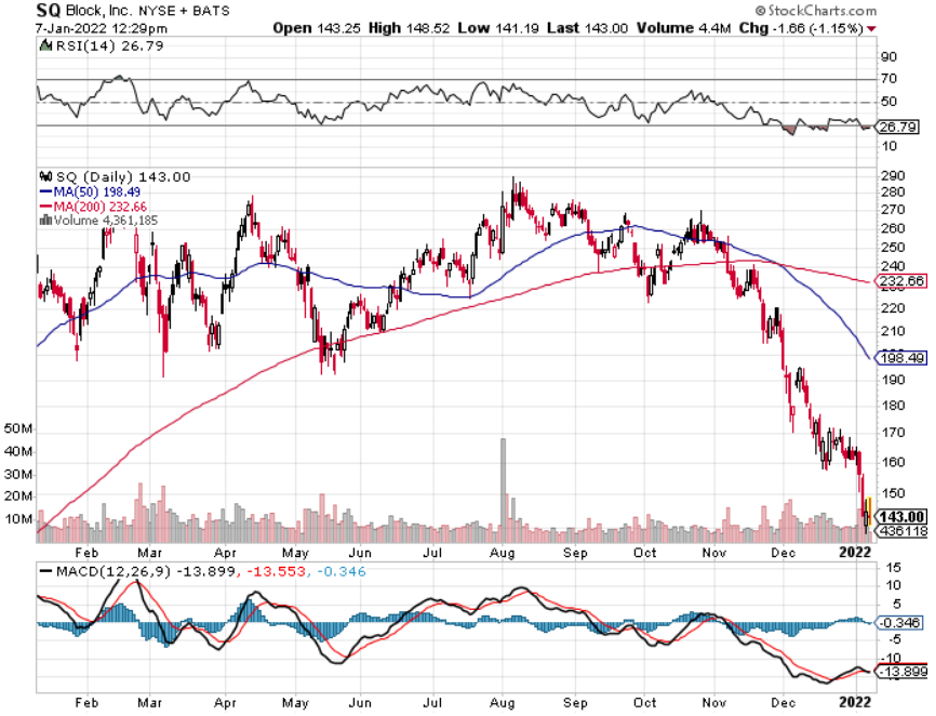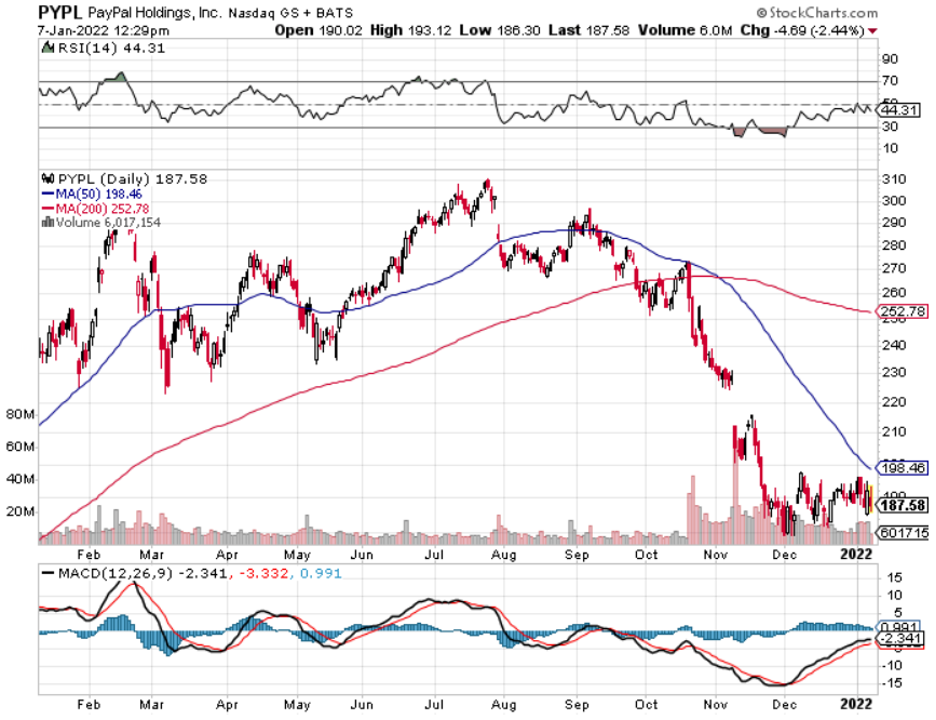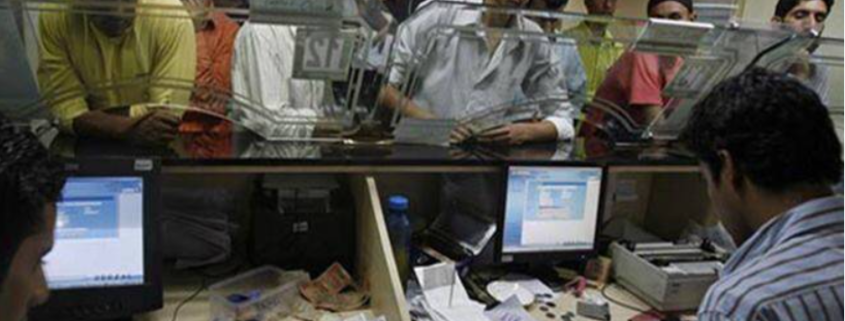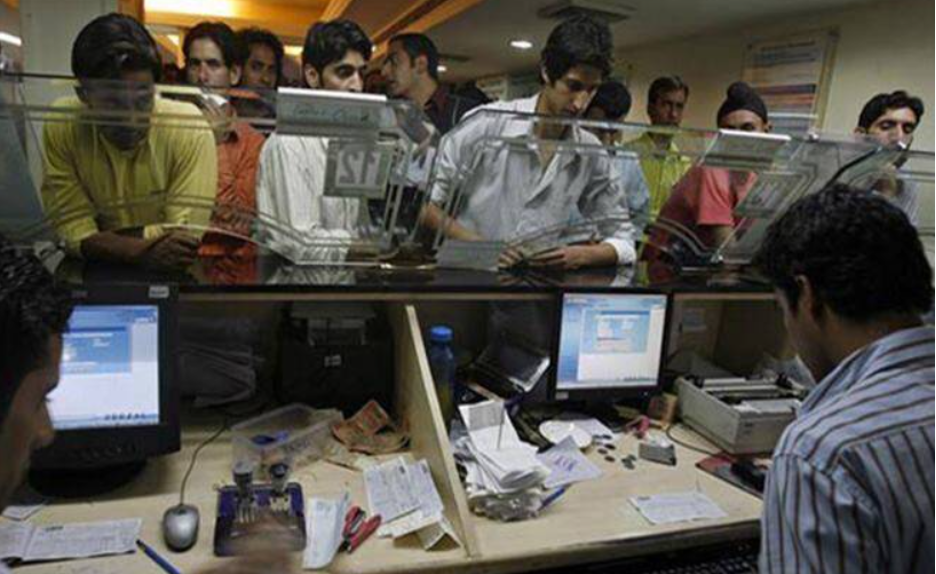Tech has led the way to the downside as the macro picture sours in the short term.
Valuations have come down from the nosebleed levels and now is the time to pick and choose where to allocate capital for the next leg up in tech.
Avoiding growth tech is something that should be stapled to your bedpost, loss-making companies won’t be able to compete with more established revenue models.
You don’t want to catch a falling knife, but at the same time, diligently prepare yourself to buy the best discounts of the year.
Here are the names of five of the best stocks to slip into your portfolio in no particular order when we find a bottom.
Remember, tech ALWAYS comes back.
Apple
Steve Job’s creation is weathering the gale-force storm quite well. Apple has been on a tear reconfirming its smooth pivot to a software service tilted tech company. The timing is perfect as China has enhanced its smartphone technology by leaps and bounds.
Even though China cannot produce the top-notch quality phones that Apple can, they have caught up to the point local Chinese are reasonably content with its functionality.
That hasn’t stopped Apple from vigorously growing revenue in greater China 20% YOY during a feverishly testy political climate that has their supply chain in Beijing’s crosshairs.
The pivot is picking up steam and Apple’s revenue will morph into a software company with software and services eventually contributing 25% to total revenue.
They aren’t just an iPhone company anymore. Apple has led the charge with stock buybacks and will gobble up a total of $200 billion in shares by the end of 2021. Get into this stock while you can, as entry points are few and far between.
Oh, and their 5G phone is selling like hotcakes. Some one billion need to be replaced to bring consumers into the new high speed 5G world.
Amazon (AMZN)
This is the best company in America, hands down, and commands 5% of total American retail sales or 49% of American e-commerce sales. The pandemic has vastly accelerated the growth of their business.
It became the second company to eclipse a market capitalization of over $1 trillion. Its Amazon Web Services (AWS) cloud business pioneered the cloud industry and had an almost 10-year head start to craft it into its cash cow. Amazon has branched off into many other businesses since then, oozing innovation, and is a one-stop wrecking ball.
The newest direction is the smart home where they seek to place every single smart product around the Amazon Echo, the smart speaker sitting nicely inside your house. A smart doorbell was the first step along with recently investing in a pre-fab house start-up aimed at building smart homes.
Microsoft (MSFT)
The optics in 2021 look utterly different from when Bill Gates was roaming around the corridors in the Redmond, Washington headquarter -- and that is a good thing.
Current CEO Satya Nadella has turned this former legacy company into the 2nd largest cloud competitor to Amazon and then some.
Microsoft Azure is rapidly catching up to Amazon in the cloud space because of the Amazon effect working in reverse. Companies don’t want to store proprietary data to Amazon’s server farm when they could possibly destroy them down the road. Microsoft is mainly a software company and gained the trust of many big companies, especially retailers.
Microsoft is also on the vanguard of the gaming industry and deals like the $86 billion purchase of Activision (ATVI) mean that it will be difficult for another company to loosen MSFTs stranglehold at the top of the gaming ladder.
Alphabet (GOOGL)
Alphabet and Facebook boast a strong duopoly of ad technology. Alphabet generated 80% of its revenue from Google's advertising services in 2020. Google's non-advertising businesses (including subscriptions and hardware) accounted for 12%, while another 7% came from Google Cloud.
Alphabet's total revenue rose 13% in 2020, even as the pandemic throttled the growth of Google's advertising business in the first half of the year. The growth of Google Cloud throughout the year also cushioned that blow.
Google's advertising business recovered in the second half of the year, and Alphabet's operating margin expanded from 21% in 2019 to 23% in 2020. Its diluted earnings per share (EPS) also grew 19%.
In the first nine months of 2021, Alphabet's revenue rose 45% year over year as Google's advertising and cloud business grew in tandem.
Its array of different businesses like LinkedIn, YouTube, and Google Maps means this revenue pipeline is as fertile as can be.
Google’s robust balance sheet will protect itself from any downtrend in business that they might ever suffer.
Tesla (TSLA)
The influential EV leader has really surged ahead of the competition during the pandemic.
Demand for its product is off the charts as they delivered 184,800 Model 3 and Model Y cars in the first quarter, beating expectations and setting a record for Tesla.
However, the company also said it produced none of its higher-end Model S sedans or Model X SUVs for the period ending March. It delivered 2,020 older Model S sedans and Model X SUVs from inventory.
Supply chain issues are likely to remain a challenge for Tesla this year as many EV makers are having a hard time sourcing semiconductor chips.
Tesla is now aiming to produce 2,000 Model S and X vehicles per week later this year.
The company said Monday it expects more than 50% vehicle delivery growth in 2021 overall, which implies minimum deliveries of around 750,000 vehicles this year.
This stock is a must-buy when tech reverses.

